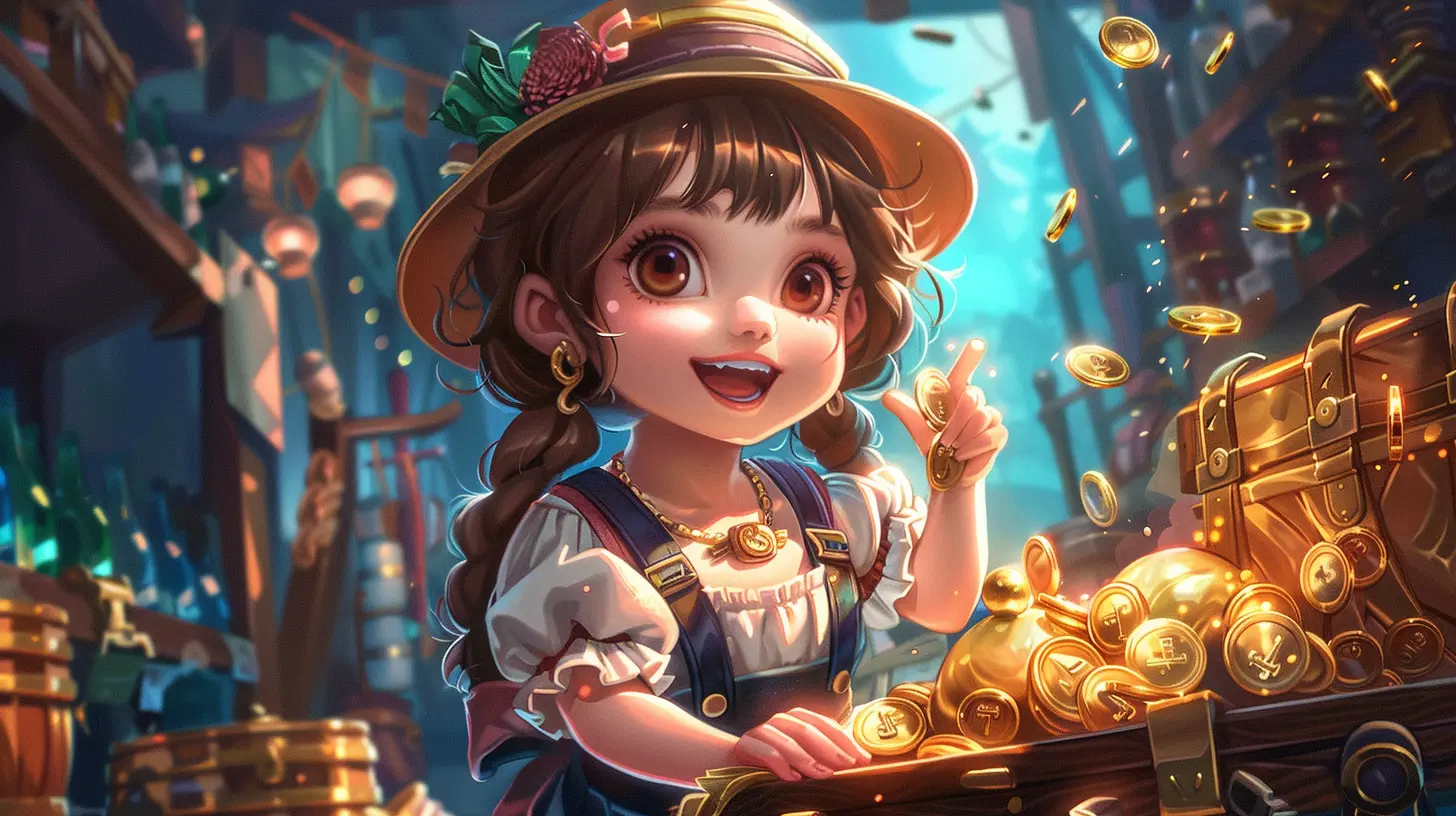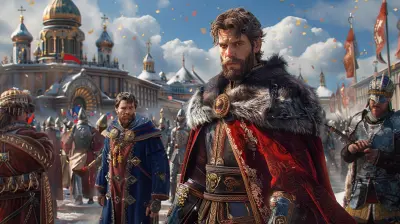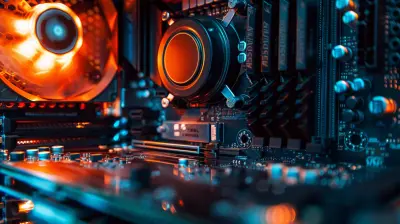The Secret Sauce Behind Successful Gacha Systems
6 November 2025
Ever found yourself hitting that "Summon" or "Pull" button endlessly, hoping to snag your dream character or epic item? Yeah, we've all been there. Whether it's a mobile RPG, an anime gacha game, or even a card-collecting meta, gacha systems know how to get under your skin—in the best (and sometimes wallet-burning) ways.
So, what really makes a gacha system tick? Why do some games hit the jackpot with players, while others flop harder than a miss on a legendary pull? Buckle in, because we’re about to break down the secret sauce behind successful gacha systems. Spoiler alert: it’s not all RNG (Random Number Generator), but it sure plays a part.

What Even is a Gacha System Anyway?
Let’s cover the basics first. A gacha system is a game mechanic where players spend in-game currency (sometimes real money) for a chance to receive a random virtual item—usually characters, weapons, or gear. It’s kind of like a digital lottery with flashy animations.Think: vending machine meets slot machine with anime art and addictive gameplay. Sounds fun, right? It is—when done right.

The Psychology of Pulling – Why Gacha Feels So Good
The Dopamine Rush
One word: anticipation. That heart-racing moment before the animation finishes and you see what you got? That’s dopamine flooding your system. It’s the same chemical that kicks in when you win big in a casino or unwrap a gift.Gacha games are designed to give you that rush. They play with uncertainty, hope, and a dash of glittery lights and sounds to keep you coming back.
Variable Reward Schedules
Want to know a secret that psychologists—and game devs—have known for decades? People respond strongest to rewards that come unpredictably. That’s the entire backbone of gacha.Unlike fixed rewards ("Get 5 stars for completing this mission"), variable rewards hit differently. You never know when you’ll get lucky—and that unpredictability keeps you engaged.

The Ingredients of a Winning Gacha System
So, now to the meat of the matter. What makes some gacha systems wildly successful and others dead on arrival? Here’s the breakdown:1. Clear, Fair (Enough) Drop Rates
No one likes getting scammed. Successful gacha games are upfront about drop rates—even if they’re low.Transparency builds trust. Games like Genshin Impact, Arknights, or Fate/Grand Order might have low base rates for the rarest units, but they always let you know what you're getting into. Some even include detailed probability charts.
Some games, like Epic Seven and Honkai Star Rail, go the extra mile by offering “pity systems”—after a certain number of pulls, you're guaranteed a top-tier item. It's like a safety net for your gamble.
2. Strong Character Design & Story Integration
Let’s be real: we don’t pull just for stats—we pull for waifus, husbandos, and cool-looking weapons with a tragic backstory.When characters are deeply embedded into the game’s narrative, players become emotionally invested. You’re not just pulling for a pixelated sprite—you’re pulling for your favorite storyline companion.
Look at Fire Emblem Heroes or Azur Lane. Those games aren't just throwing generic units into the gacha pool; they're using fan-favorite characters with distinct personalities, art styles, and voice lines.
3. Limited-Time Events & Banners
Scarcity is powerful. When something’s only available for a short time, the fear of missing out (FOMO) kicks in hard.Gacha games capitalize on this with limited-time event banners. They introduce exclusive characters or items you can’t get later—or if you can, it’s not for a long while.
"Pull now or regret later." It’s that simple.
4. Resource Management & Soft Currencies
Successful games don’t force you to pay—at least not up front. They let you earn a fair amount of currency (usually gems, crystals, or orbs) through gameplay.Smart players save these up for big events. Clever gacha systems know how to walk that tightrope between generosity and stinginess to keep players engaged long-term.
5. Community & Social Engagement
Gacha isn’t just about solo play. Many games fuel player excitement through community:- Shared hype over upcoming banners
- Showcase threads of who pulled what
- Reddit salt memes when everyone gets shafted
Some games even include co-op functions, PvP rankings, or guilds to heighten the stakes. When everyone’s chasing the same shiny new character, the communal feel makes it even more compelling.
6. Frequent Updates & Content Releases
Staleness is the killer of engagement. The best gacha games avoid this by constantly rolling out new characters, updates, events, and challenges.Take Genshin Impact as an example again. Regular patch notes, teasers, and livestreams keep the player base buzzing months before actual updates drop. That constant carrot-dangling is essential in keeping players hooked.

Monetization Without (Totally) Alienating Players
Let’s talk about the elephant in the room: money.Yes, gacha systems are a monetization powerhouse. But the most successful ones know how to extract revenue without enraging their players.
Free-to-Play Friendly...But Tempting
It’s a balancing act. Free players should always have a chance to earn top-tier units (eventually), but spenders get the benefit of faster progress or higher pull rates.Games that feel too "pay-to-win" often lose their player base. The trick? Let free players dream big, and give whales (the term for heavy spenders) reasons to spend more—without making it mandatory.
Bundle Deals & Microtransactions
Smart gacha systems sprinkle in "value packs" and deals that feel too good to pass up. These are psychological triggers priced just right—often $0.99 or $4.99.They're designed to make that first purchase feel painless. And once you've paid once, you're more likely to do it again. It’s called the "foot-in-the-door" tactic.
VIP Systems and Exclusive Bonuses
Some games reward spenders with VIP tiers. The more you spend, the more benefits you get—like faster stamina recovery, more daily summons, or bonus loot.It’s a loyalty program. When done tastefully, it can enhance the experience without making it unfair for non-spenders.
Design Choices That Make Pulling Addictive
Beyond the numbers, it’s about presentation. The animation, the music, the sound-click of a rare pull landing—all of it adds to the thrill.Epic Pull Animations
Ever notice how gacha games turn a 2-second action into a whole cinematic?- Spinning summoning circles
- Zoom-ins on glowing orbs
- Voice lines that scream “Ultra Rare!”
These moments sell the idea that what just happened matters. Heck, even if you get nothing but 3-star meh-ness, that animation makes it feel worth it.
Pull Rituals and Superstitions
Players LOVE building their own rituals:- Pulling at 2 AM for “good luck”
- Doing single pulls instead of 10-pulls
- Using a certain character on the menu screen
None of it’s logical, but it builds a narrative. And narrative keeps you emotionally connected—even when RNG isn’t on your side.
Pitfalls To Avoid (And Why Some Gacha Games Fail)
Not every gacha game makes it. Some crash and burn—hard. Here’s what successful systems avoid:Greed Over Gameplay
Games that push monetization too aggressively lose their audience fast. If players feel forced to pay just to progress or stay relevant, they’ll walk. And they won't look back.Stale or Oversaturated Pools
A bloated gacha pool filled with dozens of irrelevant or outdated units? Instant turn-off.Smart games regularly refresh the pool, retire old units, or offer focused banners with limited distractions. They clean up the mess so people feel excited to pull.
Lack of Content Beyond Gacha
If pulling is the only good part of your game... it’s not gonna last. Successful games layer in robust gameplay, exploration, PvP, guilds, and story modes. Pulling should enhance the play, not substitute it.No Long-Term Player Retention Strategy
Games need to think long-term. That means rewards for returning players, anniversary events, reruns of fan-favorite banners, and consistent communication. Ghosting your player base? Instant death sentence.Final Thoughts: What Keeps Us Coming Back?
At the end of the day, a successful gacha system is more than just a money-making machine. It’s part casino, part storytelling device, part community-builder.It’s about managing hope and hype, making players feel like they’re part of something bigger—even if it's just chasing a 0.6% drop rate.
The best gacha games are the ones that respect your time, tempt your wallet without demanding it, and always give you something to look forward to. When those stars align, it’s magic.
And let’s be real—no one forgets the moment they pulled their very first 5-star. That’s the real secret sauce.
all images in this post were generated using AI tools
Category:
Game MonetizationAuthor:

Stephanie Abbott
Discussion
rate this article
1 comments
Whitney Rogers
Great insights on gacha systems! I appreciate the analysis of player engagement and monetization strategies. Looking forward to more articles like this!
November 7, 2025 at 5:37 PM

Stephanie Abbott
Thank you! I'm glad you enjoyed the article. Stay tuned for more insights on gacha systems!


